Veni, Vidi and Vici grants awarded to the University of Groningen in 2023
Grants awarded by the Netherlands Organisation for Scientific Research (NWO, Innovational Research Incentives Scheme).
Vici awards
The Vici grant targets senior researchers who have successfully demonstrated the ability to develop their own innovative lines of research. In doing so, they have also supervised young researchers. Researchers who receive a Vici grant have the opportunity to further develop their research group, often in anticipation of a tenured professorship, if they do not already have one.
Prof. Marleen Kamperman – Microfluidic systems to develop (bio)polymers
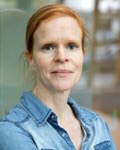
The research for which Prof. Kamperman (Faculty of Science and Engineering) has been awarded a Vici grant concerns (bio)polymers. The threads produced by velvet worms are remarkably sticky and stiff; the beak of a jumbo squid is extremely hard; and spider silk is incredibly tough. To make these extraordinary materials, nature uses fluidic phase-separated biopolymers, or coacervates, as intermediates during processing. Gradual solubility changes transform the fluids into their final solid state. Researchers aim to mimic these natural processing strategies using microfluidic systems to develop an aqueous-based, highly controlled and environmentally benign processing strategy for (bio)polymers.
Prof. Lisa Herzog – Market regulation from a democratic perspective
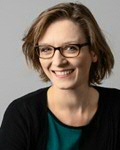
The grant awarded research project of Prof. Herzog (Faculty of Philosophy) investigates how democracies should understand and organize work. This project draws on empirical and philosophical analyses of non-standard forms of work – digital, precarious, and migrant work – to analyze current developments and their implications for democracy. It also addresses the unresolved question about the relation between paid and unpaid work and draws on the history of ideas, to develop a democratic philosophy of work, in dialogue with societal actors, that can inform labor market regulation from a democratic perspective.
Prof. Ming Cao – The decision making process of autonomous robots
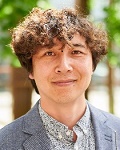
Awarded research conducted by Prof. Cao (Faculty of Science and Engineering) concerns the decision making process of autonomous robots. With autonomous machines becoming ubiquitous in industry and daily life, we should be able to control the way these systems make decisions. This project draws inspiration from social animals (biology), competitive human behaviors (marketing), and collective opinion formation (sociology). Employing a multi-disciplinary approach, we will improve decision-making processes of autonomous robots working in teams, especially when they are frequently influenced by stochastic perturbations. The project will improve the control of autonomous robots, broaden the application of robot teams, and benefit smart factories and digital societies in the long run.
Prof. Floris Foijer – How cancer cells duck immune recognition
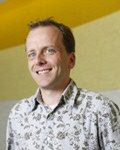
The grant awarded to Prof. Foijer (UMCG) is for his research on cancer cells. Cancer cells frequently undergo errors when segregating their chromosomes. Our prior work shows that such errors in healthy cells activate the immune system, but that sloppy cancer cells do not. We investigate how these cells duck immune recognition, ultimately to identify ways to re-awake the immune system to clear them.
Vidi awards
Vidi grants are intended for experienced researchers who have been conducting successful research for some years after gaining a PhD. With this grant, the researchers can develop their own innovative five-year research plans and can establish their own research groups.
Dr Johannes Klein – Gold and oxygen: Turning foes into friends
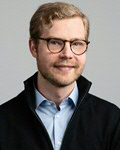
The project of Johannes Klein (Faculty of Sciene and Engineering) investigates the troubled relationship between the elements gold and oxygen and how this relationship can be remedied to develop new tools for the modification of organic compounds. These new tools will use two gold atoms to create new catalysts and use light to activate them. In these catalysts the two gold centres will communicate with each other to jointly convince oxygen-based ligands to participate in new reactions.
Dr Nikolay Martynchuk – Finding monodromy in perturbations of classical and quantum integrable systems
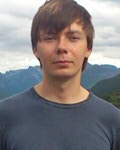
Various systems in physics, chemistry, and mechanics are perturbations of integrable models, states Nikolay Martynchuk (Faculty of Science and Engineering). Geometrically this means that the system exhibits approximately regular dynamics, while its quantum properties can locally be modelled on a lattice.This research focuses on the following question: which part of the geometry of an integrable model is stable under small perturbations and can therefore be found also in the original system? This question will primarily be investigated in the context of the so-called “quantum monodromy” phenomenon and its generalisations, which are very frequently observed in concrete examples of integrable models.
Dr Tessa Quax – How viruses change the function of archaeal cells
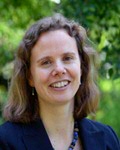
The research for which Tessa Quax (Faculty of Science and Engineering) has been awarded a Vidi grant concerns Archaea. Archaea are the most recently discovered domain of life. These micro-organisms thrive in many environments, from hydrothermal vents to our gut. Viruses infect archaea. During infection, viruses change the behavior of micro-organisms, for example by altering the cell surface. This results in increased attachment to materials or an escape from the human immune system. These changes are hardly mapped for archaeal viruses. This project will unravel the underlying mechanisms, stimulating the development of methods to characterize and manipulate the virus-induced changes in archaea. It will thus contribute to application of archaea in bioenergy-production and restoring the balance in our gut.
Dr Monique van der Wijst – Are your immune cells destined for greatness or for failure?
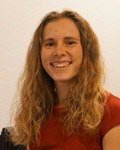
The grant awarded to Monique van der Wijst (UMCG) is for her research on immune cells. Even though all your cells inherit the same DNA from your parents, there is a great diversity of cells in your body: from skin cells to brain cells. Even when we zoom in on the same cell type, these seemingly identical cells look and behave a little bit differently from each other. It is largely unclear where this variation between seemingly identical cells comes from and how it may impact your health. The researcher will develop a “time machine for cells” to study this phenomenon in immune cells and explore how it affects their behavior in response to pathogen exposure.
Dr Arianna Bisazza – Polyglot Machines: Human-like Learning of Morphologically Rich Languages
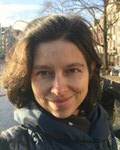
The project by Arianna Bisazza (Faculty of Arts) aims to improve the quality of language technologies for a broad class of world languages characterised by many different and complex word forms (morphology), which are particularly challenging for current machine learning models. To achieve this, the project will draw inspiration from the human process of language acquisition. New models will be trained on data that resemble the sentences spoken to children acquiring morphologically rich languages. This will lead to more equitable provision of language technologies worldwide.
Dr Çigdem Bozdag – Migrant generations in the digital society: a multi-level study of socio-cultural factors influencing digital inclusion
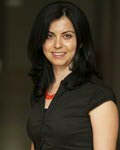
The ability to effectively use digital technologies has become a prerequisite for participating in many spheres of social life, writes Çigdem Bozdag (Faculty of Arts). Digital inclusion implies that all citizens have an equal chance to participate in the digital society. This project will study the digital inclusion of migrant generations in the Netherlands and develop a new conceptual framework focusing on socio- cultural factors that affect digital inclusion. The team will analyse users, policies, public initiatives and educational practices – a multi-level approach to identify the overlaps and disconnects between the perspectives and needs of different actors, which will ultimately inform more effective policies for digital-inclusion.
Veni awards
Veni is aimed at excellent researchers who have recently received their doctorates. Laureates can use this amount to further develop their own research ideas for three years.
Lighting the way of drug discovery: photochemical synthesis of non-natural amino acids
Dr Sebastian Beil, Faculty of Science and Engineering
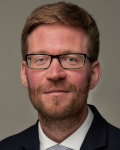
The photochemical synthesis of non-natural amino acids is a promising approach for drug discovery. Thismethod utilizes visible light to create new amino acids that can be incorporated into proteins or smallmolecules to create new drug candidates with improved properties such as increased stability or specificity.Mild photochemical synthesis of non-natural amino acids also allows for the precise control of their chemicalstructure, which can lead to more selective and effective drug candidates. In this project new non-naturalamino acids will be made with blue light photocatalysis to ensure a supply of these powerful building blocksfor future medicines.
Destabilizing the archetypal team: Causes and consequences of dynamic team membership
Dr Stefan Berger, Faculty of Economics and Business
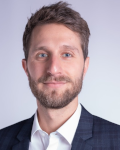
More than 90% of organizations rely on teamwork and billions of euros are invested in team development each year. These activities are typically based on knowledge that researchers developed on ‘archetypical’ teams in which membership is full-time and stable. This is problematic because most of today’s employees work in multiple teams simultaneously and regularly change their teams (= dynamic team membership). The present project develops insights into how employees experience such dynamic team membership, which are used to create a training module on how to better manage today’s teams.
The bigger the better, the smaller the faster: Why do males and females grow apart?
Dr J. A. ten Brink, Faculty of Science and Engineering
In many animal species males and females look differently. This has consequences for the management of populations since males and females will respond differently to environmental change. Differences between the sexes are often not fixed, but change during the development of an individual due to environmental conditions, for example food availability. In this project, the researcher will study how environmental conditions affect the evolution of sex differences and what the consequences of these differences are for the population.
Sovereignty, sanctity, violence and conversion in the Outremer: the crusades of Louis IX in Arabic and 'Islamicate' political thought
Dr Mohamad El-Merheb, Faculty of Arts
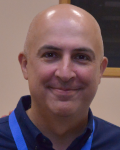
This project innovatively brings the Eastern Mediterranean’s contact with Latin Christianity during the crusades into the history of premodern Islamic political thought. By examining an Arabic corpus of understudied treatises by Muslim, Jewish, and Christian authors, and the material culture produced around Louis IX’s Crusade and his stay in the East, this research uncovers how the ideological enterprise of the king of France moulded novel Islamicate conceptions of sovereignty, legitimacy, the Latin West, and the papacy. This project uncovers further fundamental transformations ensuing from this contact in Islamic views on sanctity, the justification and rules of war, and religious conversion.
Optimizing orientalism? Rethinking the global Jewish elite
Dr Sasha Goldstein-Sabbah, Faculty of Arts
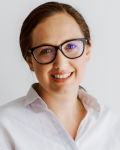
How did Middle Eastern and North African (MENA) Jewry build transnational philanthropic, commercial, and diplomatic networks in the period between 1860-1948? This project explores the agency of MENA Jewry, using documents from private and institutional archives to rethink the connection between transnational religious networks and empire building. In doing so this project demonstrates the centrality and agency of Jewish communities located outside of Europe, in ways that challenge assumptions about the center and the periphery within empire. I hypothesize that, within the context of European imperial ambitions, MENA Jewry consistently challenged the social norms and political expectations of colonizers.
On the move: Imaging propagating spin waves in two-dimensional magnets
Dr S. Kurdi, Faculty of Science and Engineering
Our increasing dependance on technology demands smaller and more energy efficient electronics. The researcher will develop a novel tool with ultra-high resolution to capture images of coupled magnets in the atomic scale as a first step towards the development of low power nanoscale devices to meet demands in current information technology.
Deciphering the Glyco-code of Head and Neck Cancer by Generating a Single Cell Glycomics Workflow
Dr Guinevere Lageveen-Kammeijer, Faculty of Science and Engineering
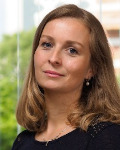
Our cells are covered with a dense layer of glycans, and when incomplete or incorrect, their structures contribute to the malignant phenotype of cancer cells by promoting proliferation, metastasis, and immunosuppression. In this project, I will decipher and characterize the malignant glyco-code of head and neck cancer by developing an innovative analytical workflow. By using minimal sample amounts (up to single cell), optimize sample preparation strategies and combining this with cutting-edge techniques, I will be able to pinpoint glycomic alterations which eventually can be exploited for personalized prognosis and treatment strategies of head and neck cancer.
The role of fluid and salt in acute heart failure
Dr Jozine ter Maaten, Cardiology UMC Groningen
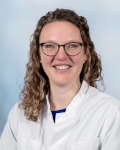
Patients with acute heart failure retain fluid, however there is great variety in where this fluid is retained in the body. Currently, all patients are treated exactly the same however, regardless of where the fluid is retained. This research will specifically study acute heart failure patients with an extensive amount of fluid in the tissue, to study the role of storage of salt in the tissue and whether treatment with additional salt might lead to better treatment of this excess fluid.
(Re)forming Moderation of Platform Content
Dr João Magalhães, Faculty of Arts
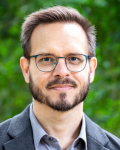
Social media platforms’ ability to define and govern what is objectionable and desirable (platform content moderation) has reconfigured disputes over free speech worldwide.
Yet little is known about the history of these governance regimes – whose interests platforms heeded and ignored as they navigated the unique political, technical, legal, and economic difficulties of policing speech at scale. Tracing this development is crucial to better understand and reform platforms’ power.
This project will study the critical moments in the making of moderation rules and use its findings to create guidelines for remaking online speech control, producing open datasets in the process.
Rituals in Flux: Diasporic religion of Christian Palestinian refugees, 1948-present
Dr E. S. Marteijn, Faculty of Arts
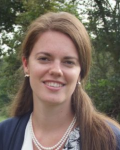
The vast majority of Christian Palestinians worldwide live in diaspora. Academic knowledge about these communities is scarce. This research project traces the formation and global entanglements of Christian Palestinian refugee communities from 1948 to the present, and examines how their theological ideas and religious practices are affected in situations of violent conflict and forced displacement. It does so by studying these refugees in three different contexts: Israel (internal displacement), Lebanon (displacement in the region) and Germany (displacement outside of the region). Ultimately, this project develops an interdisciplinary theoretical framework to further our understanding of the connection between religion and refugees.
High-resolution galaxy kinematics at z=3: a new perspective on the interplay between ordinary and dark matter in driving galaxy evolution
dr F. Rizzo, Faculty of Science and Engineering
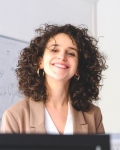
Almost 40 years ago, astronomers discovered that nearby galaxies rotate so fast that the gravity generated by stars and gas could not possibly hold them together. This led them to believe that galaxies are held together by an invisible form of “dark matter”. However, to date, the nature of this dark matter has remained a mystery. By using new data from very distant galaxies, this research will clarify what exactly this strange substance is made of and will allow for learning more about the build-up and assembly of structures in the early Universe.
Profiling and detection of dangerous plasma cells in Sjögren's disease
Dr Tobit Steinmetz, Rheumatology and clinical immunology UMC Groningen
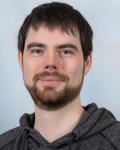
Antibodies are protective defense proteins of our body that shield us from viruses and bacteria. But antibodies can become harmful when directed against ourselves. Patients suffering from Sjögren’s disease have self-directed antibodies that limit the ability to produce saliva and tears and raise the patients’ risk of blood cancer. This research creates a mug shot of plasma cells that make these harmful antibodies. Knowing the profile of plasma cells helps to find a patient-specific treatment that uniquely affects harmful plasma cells while leaving protective plasma cells untouched.
Kernel-based control theory of nonlinear systems
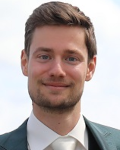
Conventional digital computers require a large amount of energy to operate. The vision of neuromorphic computers is to perform calculations in the same way as the human brain. In this project, the researcher will establish groundbreaking mathematical models of neurons. These models will form the basis for a theory of energy efficient neuromorphic computing with a small carbon footprint.
Why misfortunes often come together: understanding the gut microbiome’s role in the co-occurrence of cardiometabolic and kidney diseases
Dr Daoming Wang, Universitair Medisch Centrum Groningen
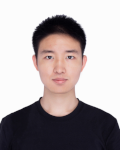
Cardiometabolic disease (CMD) and chronic kidney disease (CKD) often co-occur, thus increasing treatment difficulty and mortality. Gut microbes are associated with both cardiometabolic and kidney health, yet the causal bacterial genes and pathways underlying CMD and CKD remain unclear. This project delves into the DNA code of gut bacteria to identify bacterial genes regulating both cardiometabolic and kidney health and depict new molecular pathways connecting CMD and CKD.
Effects of heat waves on marine communities in shallow coastal seas
Dr Oscar Franken, Faculty of Science and Engineering & NIOZ Royal Netherlands Institute for Sea Research
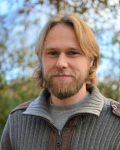
Increases in frequency and intensity of heat waves are affecting life in shallow seas. Especially locations that are dry during low tide are exposed to extreme temperatures. Animals living more shallowly could therefore have a higher risk of dying. I will analyse existing datasets to see if species in the Dutch Wadden Sea have been affected by heat waves. In experiments I will test if we can explain the observed changes by measuring the thermal tolerance of species. This research quantifies the risk shallow seas face during heat waves, which is important to anticipate on effects of future heat waves.
